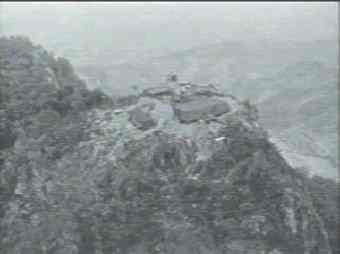 LIMA 85
was the name of a TSQ-81 radar and TACAN site located in the mountains of Laos about 12 miles west of the Lao/NVN border. The TSQ-81 radar was used to provide flight following and navigation assistance for US aircraft operating in Laos and North Vietnam; the TACAN was (and remains) a standard radio navigation aid.
LIMA 85
was the name of a TSQ-81 radar and TACAN site located in the mountains of Laos about 12 miles west of the Lao/NVN border. The TSQ-81 radar was used to provide flight following and navigation assistance for US aircraft operating in Laos and North Vietnam; the TACAN was (and remains) a standard radio navigation aid.
At the time LIMA 85 was established, Laos was officially neutral under the 1962 Geneva Accords. The North Vietnamese government simply ignored the 1962 agreement and effectively exercised military control over large parts of Laos adjacent to the NVN, SVN, and Cambodian borders. The United States government officially observed Laotian neutrality while unofficially attempting to respond to Laotian government requests for assistance.
The 1962 Accords prevented any open U. S. military presence in Laos, so the men assigned to operate LIMA 85 couldn't be military - yet only military personnel were trained in TSC-81 operations. The answer was both simple and sneaky: US Air Force personnel were officially assigned to the 1043rd Radar Evaluation Squadron, Bolling AFB, Washington DC, temporarily released from active duty, and "employed" by Lockheed as civilians. The TSQ-81, TACAN, generators, prefab buildings, and other necessary equipment was provided by the Air Force and the site established on a 5860 foot high mountain called Phou Pha Thi. The site was protected on three sides by sheer cliffs.
Once in operation, LIMA 85 developed into a real thorn in North Vietnam's side - the high-resolution TSQ-81 radar allowed precision bomb drops by aircraft otherwise incapable of effective night/bad weather ground attack, while the TACAN supported accurate aircraft navigation. The site was protected by a combination of Thai "mercenaries" and Laotian tribesmen loyal to the government - a total force of about 1,000 irregular troops.
In January 1968 the North Vietnamese attempted to destroy LIMA 85 by air attack ... in one of the very rare air operations conducted outside their own borders, the Peoples' Army of Vietnam (PAVN) Air Force used AN-2 Colts to bomb and strafe the site. While the attack was unsuccessful, it clearly illustrates the importance placed on destroying LIMA 85. (NOTE: The PAVN AF Museum in Hanoi reportedly has a highly visible, detailed representation of the attack complete with a mock-up of the mountain, model AN-2 Colts, photos of the aircrew, and the gun pod from one of the AN-2 Colts).
In February 1968 it became evident that the NVN government intended to conduct a massive ground operation directed at capturing and destroying LIMA 85. Ten PAVN battalions were identified moving toward and establishing base camps at the foot of Pha Thi mountain. The US Ambassador to Laos was responsible for deciding when the Americans manning LIMA 85 would be withdrawn - and he left the decision unmade for one day too long.
On 11 March 1968 the ground attack began and ended - by day's end the PAVN troops had assaulted through the fourth side of the site, the only approach not blocked by sheer cliffs, and had overrun the site. US rescue efforts were only partially successful ... eleven Americans were lost when LIMA 85 fell into enemy hands, and a twelfth was lost when his A-1E SKYRAIDER was shot down.
As of 06 November 2002, none of the twelve US Air Force men lost at LIMA 85 have been repatriated.
| LTC Clarence Finlay Blanton | MSGT James Henry Calfee | |
| SSGT James Wooden Davis | SSGT Henry Gerald Gish | |
| TSGT Willis Rozelle Hall | TSGT Melvin Arnold Holland | |
| TSGT Herbert Arthur Kirk | A1C David Stanley Price | |
| TSGT Patrick Lee Shannon | TSGT Donald Kenneth Springsteadah | |
| SSGT Don Franklin Worley | CPT Donald Elliot Westbrook (Shot down 13 Mar 1968) |